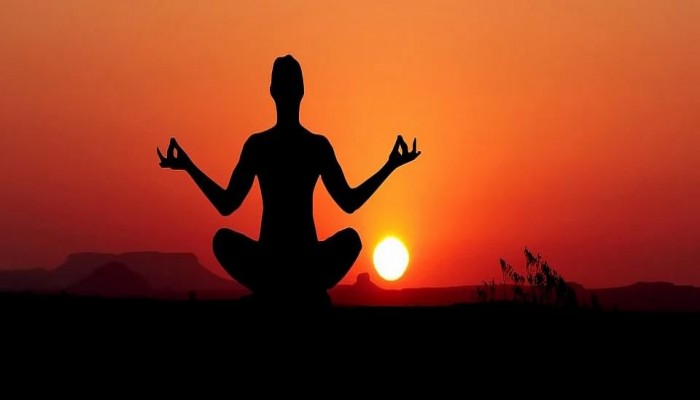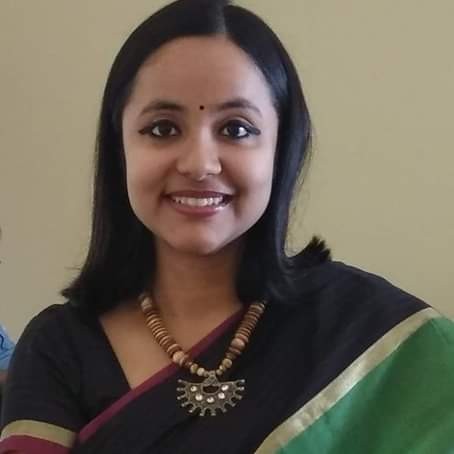Yoga: An Inalienable Treasure Trove of India
- In History & Culture
- 04:34 PM, Jul 27, 2020
- Ankita Dutta
Declaration of June 21 as the International Day of Yoga by the UNGA at the behest of PM Narendra Modi has indeed been one of the most effective uses of Yoga as a diplomatic tool in India’s soft-power projection. It has also helped advance India’s cultural diplomacy in the global arena.
The significance of the date, i.e. June 21, is borne from a couple of reasons – the foremost being that June 21 happens to be the longest day of the year in the northern hemisphere and the shortest in the southern hemisphere. Moreover, with respect to India, the full moon night that occurs after the annual summer solstice is popularly known as Guru Poornima. It is believed that on this day, Shiva (the first Yogi or Adiyogi) began imparting the knowledge of yoga to the rest of humankind.
The Hinduphobic Indian media has often smelt of bias in depicting Yogis and Aghoris as insane babas practising some form of black magic tricks or supernatural phenomena. In order to have an unbiased and comprehensive understanding of this traditional, ancient form of living, we need to dwell upon the spiritual and philosophical aspects of the origins of Yoga, besides its importance in building healthy lives and relationships in today’s mechanistic and technology-driven world.
One of the six schools of Indian philosophy, Yoga represents a divine path through which human beings can acquire the potential to function in a more effective, organic and integrated manner in harmony with nature. Patanjali had defined Yoga as yogascittavrtti nirodhah, which means controlling and disciplining the mind, the intellect and the ego for self-realisation through eight different steps, popularly described as Astanga Yoga.
The yogic tradition of Bharatvarsha is full of accounts of great beings who have been able to dematerialise their bodies at the time of death, leaving behind no sign at all of their material existence. However, these accounts have been denigrated by the outside world as outlandish rumours or cheap magic tricks by babas, who have mostly been portrayed in a negative light by a seemingly one-sided narrative of the media.
Vedic Origins of Yoga
The word ‘Yoga’ has been derived from the Sanskrit root yuj, meaning a union or communion, i.e. the true union of our will with the will of God. Hence, Yoga represents the union of the soul with the eternal truth, a state of unadulterated bliss arising from the conquest of dualities. In Indian thought, it is believed that everything is permeated by the Supreme Universal Spirit (Parmatma) of which the individual human spirit (jivatma) is a part. The system of yoga is so called because it teaches the means by which the jivatma can be united to, or be in communion with the Parmatma, and thus secure moksha.
The evolution of the art and science of yoga is implicitly associated with the growth and spread of human settlements in South Asia. Yogacharini Meenakshi Devi Bhawani says, “Yoga is as old as the Universe, for it is both the Path and the Goal”. In the Indus Valley region, soapstone seals depicting anthropomorphic figures seated in yogic postures have been found. The term ‘Yoga’ first appeared as a textual reference in the Rig Veda around 1500 B.C. However, here its meaning was closer to ‘yoke’, i.e. its Indo-European cognate.
In the Atharva Veda, there are innumerable references of ‘Prana’ and the eight chakras of the human body. The first use of the term ‘Yoga’ as equivalent and synonymous of its modern usage appeared in the Upanishads – the most important spiritual and philosophical treasure-houses of ancient Hindu mystic thought. There are 20 Yoga Upanishads out of the 108 Upanishads.
A well-known episode from the Ramayana describes the farewell of Rama when he was banished for 14 years from the kingdom of his father Dasratha to live in the forest. His mother Kausalya was deeply overcome with grief and knew that any blessings that she would bestow upon her son at that time with tear-filled eyes would be inauspicious. Hence, she started practising asanas and pranayama to gain a firm composure of the mind and the body. This also gradually helped her recover from the shock and it was only then that she came before Rama to give him her blessings. Indeed, the Ramayana can be considered to be a practical ‘Yoga Manual’ that guides people to lead a spiritually satisfying life.
Yoginis flourished in several regions across the country during the Vedic times. In the Mahabharata, there is a reference to Sulabha, a recluse and the daughter of King Pradhan. She studied and became proficient in the knowledge of Yoga so much so that Janaka, the King of Mithila, was vanquished at her hands during a debate on Yoga. The legend of Madalasa from our historical texts stands out as yet another epic example of Yoginis from Bharatvarsha. Madalasa, the faithful and devoted wife of King Rtudhvaja, burned herself as sati after learning that her husband was dead. But she was brought back to life by Asvatara Nagaraja, since Rtudhvaja was alive.
Although at first, Madalasa, having lost all knowledge of her former existence, did not recognise her husband, she regains her knowledge after her initiation into the art of Yoga. She not only recognises her husband but also becomes supremely adept in Yoga. In the 14th century, Lalla, a woman saint from Kashmir, propagated the Yogic system throughout Bharatvarsha. Bahinibai, Sarada Devi (consort of Ramakrishna Paramhansa), etc. were some of the other prominent Yoginis during the medieval period.
Yoga became a distinctive and organised system of knowledge with the publication of the Yoga-Sutras, written by Patanjali. Meanwhile, the proliferation of ascetic heterodox sects such as Ajivikas, Buddhists and Jains also accentuated the further dispersal of yogic practices across the length and breadth of the country. Hatha-Yoga, on the other hand, is believed to have originated from Tantric and more esoteric forms of Buddhist rituals.
It was in the 19th century that yoga as a distinct form of knowledge system was revived by Swami Vivekananda, as a corollary to his revivalist Vedic discourse. During this time, Theosophists and Indophiles in the West had started embracing this new cultural import from India. Since the 1920s, the arrival of Indian Yogis in the West provided a further impetus for a wholesome espousal of Indian physical exercises and meditative practices.
According to the Bhagavad Gita, yoga represents that state of the mind which results from a detachment with motion and serenity at rest. It demands the performance of duties in cooperation with society – but without being ‘contaminated’ by attachment to profitable results, and without yielding to depression by reason of failure or to egoistic elation by reason of success. As Bhagvan Krishna says to Arjuna in the Mahabharata, “Samatvam Yoga Uchyate”, meaning, equanimity in the mind is a state of yoga. The conversation between Krishna and Arjuna gives deep insights into Yoga-Bhava or adopting a ‘Yogic Attitude’ when faced with any human crisis.
The greatest single figure in the history of Yoga is Adi Sankaracharya, who is universally accepted as the greatest exponent of the non-dualistic philosophy of Advaita Vedanta inspired by the Upanishads–which constitutes the concluding portion of the Vedic revelations. Sankara wrote several commentaries on the Brahma Sutra, the Upanishads and the Bhagavad Gita. Besides Sankara, the name of Sri Ramakrishna Paramhansa who was the guru of Swami Vivekananda stands out in the contemporary Yoga tradition.
The period between 1920-1960 saw prominent Yoga Gurus like Swami Sivananda of Rishikesh who inspired scores of young sanyasins around the world to set up Yoga Vedanta Centers in nearly every country across the world. The disciples of Swami Sivananda have today fanned out globally, building sprawling ashramas and global yoga networks which have been imparting invaluable lessons on Vedanta, pranyama and yogasanas.
Sri Aurobindo, another noted scholar and poet, wrote numerous analyses and commentaries on the ancient Sanskrit texts which contain valuable insights on the philosophy of Yoga. It was at this time when the world-famous Kaivalyadhama at Lonavala in Maharashtra, founded by Kuvalayananda, emphasised on the importance of modern scientific validation for the ancient yogic practices of asanas, pranayama, kriyas, and shat-karmas.
A Holistic System of Health and Well-Being
It is not the body but the mind which is the root cause of many diseases affecting people globally, including mental depression, unexplained anger and grief, uninhibited sexual indulgence, anxiety, discontent, distrust and various other psychosomatic conditions. This has resulted in many people today suffering from unknown diseases of their own imagination, which in many cases have also proved to be fatal. Holistic well-being means the attainment of complete freedom from both physical and mental afflictions in order to achieve the higher goal of self-realisation.
Remarkably, ancient Ayurvedic systems of medicine complement Yoga and have today emerged as one of the cutting-edge forms of mind-body medicine. It is a nature-centric process of treatment where the progress might be slow, but the results are always certain. At the same time, this does not mean that we deny the advances made by modern medical science for treating numerous diseases. But Yoga can be promoted by the medical fraternity as an alternative way of complementing synthetic drugs and medicines to speed up the process of recovery. Yoga can also help counteract the harmful or negative side-effects of allopathic treatment by strengthening the body’s natural defense mechanisms to fight diseases.
Famous Gurus like Paramhansa Yogananda, Ramana Maharshi, Sri Sri Ravi Shankar, Mata Amritanandamayi, Sadhguru Jaggi Vasudev, et. al have become names to reckon with in numerous countries across the world. For their students, Yoga has stood out more as a spiritual path of achieving the unachievable, of curing the incurable, rather than a form of physical exercise only.
In the Japanese island of Okinawa, Yoga is a very popular form of exercise, besides other Oriental forms of holistic exercises like the Chinese Qigong and Tai-Chi. Researchers like Hector Garcia and Francesc Miralles during their extensive field-studies there had noted the fact that instead of hitting the posh gyms and fitness centres, these exercises are more preferred by people here, including the centenarians and super-centenarians for ensuring health and longevity.
Hence, there exists a vast difference between Yoga and other forms of physical exercises such as walking on the treadmill or jogging or running. While the former is psycho-physiological, the latter are purely external in their obsession for a protein-supplemented muscular/well-built physique. In physical exercises, body movements may be performed with utmost precision, whereas in Yoga, a deep feeling of inner awareness is generated along with precision, which helps bring about a state of equanimity and poise of both the body and the mind.
Reclaiming Yoga – An Indic Way of Life
Yoga represents an eternal, integral, and holistic worldview that peacefully accommodates all to form an all-inclusive (Sanatana) Rashtra. This is the unique national and spiritual identity of the Indian society based on maintaining a fine balance between individual, society, environment and the universe, best reflected in the Vedic maxim – Ishavasyam Idam Sarvam – meaning, everything in the universe, whether animate or inanimate, is a manifestation of the same Chaitanya (Universal Power/Parmatma).
Today, Yoga has become a household word internationally. Although asanas have remained the main focus, pranayama, mantra and meditation techniques are also included. However, the original concept and structure of Yoga has undergone tremendous changes in its evolution since the time of its inception till the present. From Yogis imbued with immense spiritual powers, today we have yoga studios run by celebrity yoga trainers who are popularising the art at the global level in their own distinct ways. Thus, yoga has now moved out of its traditional ashrama and acquired a global image with myriad hues, e.g. power yoga, water yoga, beer yoga, etc.
In fact, the West has very subtly appropriated Yoga and turned it into a form of aerobic exercise by first repackaging Bharat’s ancient cultural and traditional heritage and then commercialising it as one of its own. All these have produced a gradual transformation of an ancient Indian philosophical system into a multi-billion dollar worldwide profit-making enterprise. However, it is now time to not only reclaim what is rightfully ours but also present it to the world as one of Bharat’s most priceless gifts to mankind.
Hence, it is imperative that India expands its yogic culture and unique civilisational strength based upon the philosophy of Lokah Samastah Sukhino Bhavantu. As it spreads once more, this Yoga Shakti can make the entire world more enlightened and deeply cognisant of all lives in the universe. However, reforming India’s heavily Left-inspired and West-oriented education system remains a crucial task to this process. The HRD Ministry’s approval for the establishment of the country’s first National School Board for Vedic Education – Bharatiya Shiksha Board (BSB) – is a welcome step in this direction.
References
- Iyengar, Geeta S. (1997). Yoga: A Gem for Women. New Delhi: Allied Publishers Pvt. Ltd.
- Basavaraddi. Ishwar V. (2015, April 23). Yoga: Its Origins, History & Development. Retrieved from https://mea.gov.in/in-focus-article.htm?25096/Yoga+Its+Origin+History+and+Development
- Hector, Garcia & Mirrales, Francesc. (2016). Ikigai: The Japanese Secret to a Long and Happy Life. Hutchinson: London.
- Srivastava, Mukesh Kumar. (2019, September 22). ‘Culture’ as a Soft-Power Diplomacy: Transforming India’s Global Image. OpIndia. Retrieved from https://www.opindia.com/2019/09/culture-as-a-soft-power-diplomacy-transforming-indias-global-image/amp/
Image Credits: Free Press Journal.
Disclaimer: The opinions expressed within this article are the personal opinions of the author. MyIndMakers is not responsible for the accuracy, completeness, suitability, or validity of any information on this article. All information is provided on an as-is basis. The information, facts or opinions appearing in the article do not reflect the views of MyindMakers and it does not assume any responsibility or liability for the same.







Comments